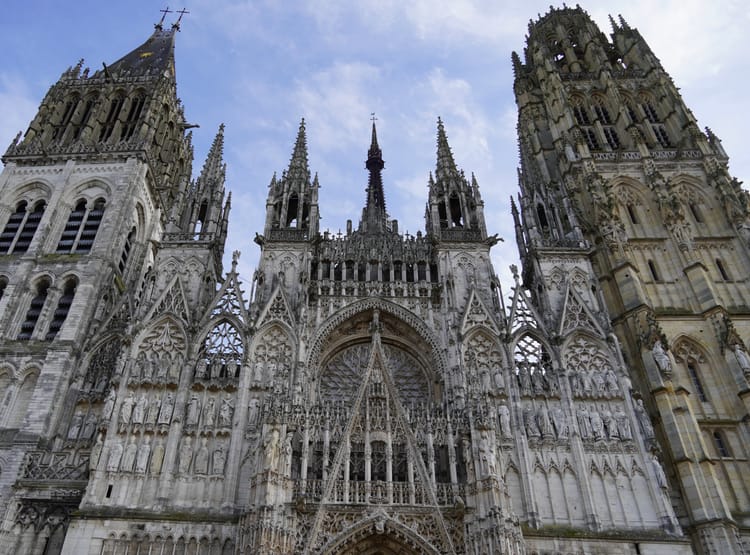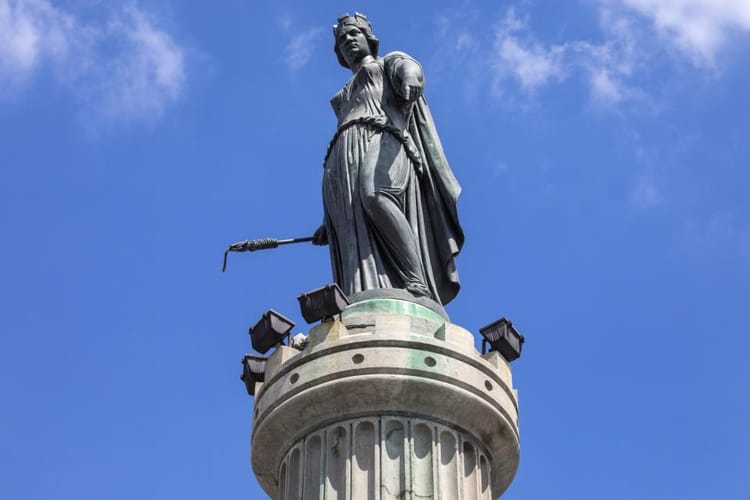London

After nine months of living in Paris (has it really been that long??), we decided to take the eurostar to London for some sight seeing, food tasting, a comedy show, and to visit some old friends from my days working at the YMCA in Big Bear. There's far too much history here in London for me to give a quick background like I've done with the French towns we've visited so far, but then again I assume you're all undoubtedly more familiar with London than towns like Lille and Rouen anyways. We spent four days and three nights in the English capital, and had a great time checking out some of its world class (and also free!) museums, beautiful city parks, delicious restaurants/dining halls, and rowdy pubs. Due to Mediaocean's office in London, it was on the list of cities available for us to choose from when moving to Europe, and though we both came to the conclusion that we prefer Paris (at least for now), visiting London was a lovely experience. Among other things, it was especially nice to hear so much English being spoken for the first time in what feels like forever.
Food
To make sure we started off on the right foot, our first stop after checking into the hotel was for some lunch at the Seven Dials food market. Seven Dials is home to several dozen different "micro restaurants" and bars, as well as a bookshop and event space. I opted for some Nashville fried chicken (despite being labeled as "hot," Europe still has yet to present much in terms of spice level compared to the US), while Emily decided to try some bao buns. We were a bit to hungry too try it out, but the market even had a restaurant with a conveyor belt specifically for cheese and desserts (maybe next time!).
Later on in our trip, we also visited Fortnum & Mason, a department store recommended on the Netflix travel show "Somebody feed Phil." We picked up some Victoria Grey tea, chocolate coated biscuits (the main show recommendation), as well as some tea biscuits. While there, we also learned that the store holds two "royal warrants" (the rights to supply goods directly to the crown) as both a grocer and tea supplier, so our purchases are in good company!
While in town, we also made sure to try out English classics such as haddock fish and chips, scotch eggs, triple-fried chips, eccles cakes (buttery pastry pies filled with currant), and of course, many pints of English ale and Guinness. On our last day, we finished up by trying out some Indian curry at the "Taste of India Euston" restaurant. Curry is one of the most popular dishes in England, so much so that it has been labeled an "adopted national dish." There is estimated to be over 12,000 curry houses across the UK, employing over 100,000 people and earning upwards of 4 billion pounds (that's over 5 billion dollars!).
While we ultimately came to the conclusion that the food doesn't quite compete with some of the restaurants we've tried around France (how can you compete with French cheese?), we were delighted with many of our food experiences, and would happily go back and test out more. Next time we'll probably try to find some options that aren't quite so deep fried!



Seven Dials






Fortnum & Mason, pastries at Arôme Bakery, and scotch eggs at the Lamb & Flag
British Museum
After lunch, our next stop was the British Museum. It was founded in 1753, when it became the first national public museum, and soon welcomed visitors from around the globe. The museum today sees close to six million visitors every year, and is home to an incredible eight million historical objects (some seen in the photos below) such as the Rosetta Stone, Parthenon Marbles, a 7.5 ton bust of Ramesses II (aka Ramesses the Great), a moai head known as "Hoa Hakananai'a," and a 15th century Aztec serpent statue made of over two thousand pieces of jade! Originally, the British museum was created to display objects from across all of human knowledge, including natural history, art, books, plays, manuscripts, and even a "cabinet of curiosities." It has been expanded several times over its history, and as parts of its collection outgrew itself, it even necessitated the construction of new museums such as the British Library.
Not without its share of criticisms, the museum has frequently come under fire for artifacts within its collection that have been either stolen, looted (some during British colonization, others even via the Nazi regime), or otherwise unjustly acquired from its countries of origin. Numerous countries have made repeated demands for these heritage objects to be returned, and disputes attempting their retrieval have been fielded many times over the museums history. Not that it seems like much of a valid excuse, but the British museum has previously stated that if the works were returned to their countries of origin, it "would empty both the British Museum and the other great museums of the world." Pieces from across Greece, Egypt, Ethiopia, China, Australia, among many others, are all currently in various stages of litigation or under contention by advocacy groups.









Rosetta Stone, Assyrian sculpture, Parthenon Sculptures, Moai, Statue of the Sri Lankan Goddess Tara, Aztec jade Serpent, Assyrian relief of Lion Hunt
Walking Tour
For a bit of London based history and some quick city highlights, we decided to go on a three hour walking tour. Both Emily and I have been to London before, so we were mainly interested in getting a little refresher and checking out the main sights like Buckingham Palace, Westminster Abbey, and of course Big Ben (yes it's technically named The Elizabeth Tower, but you get what I mean) and the Houses of Parliament.
Our first stop on the tour was at the Spencer House, originally built by the ancestors of Princess Diana in 1756. We learned that despite it being one of last aristocratic homes in the city which is still owned by its founding family, it is actually currently on a 96 year lease to an investment firm owned by the family of 4th Baron Rothschild, and has been in continuous state of letting since the second World War. It is valued at nearly 40 million pounds, and is one of the first examples of Neoclassical Greek architecture in the country.
After that, we walked through The Green Park, a beautiful tree lined park situated directly in between Spencer House and Buckingham Palace. The park is known for its tree lined walkways, war memorials, and perhaps most notably, its lack of formal flower beds and numerous wild flowers. According our tour guide, the story goes that the park and its gardens were given to Queen Catherine by King Charles II. She originally decided to have flowers planted throughout the gardens, but upon discovering that the king had been picking and using them to signal his romantic interests to the various women of the court and high society, she ordered these flowers to all to be removed, and even banned further flowers from ever being planted again. Despite her orders still being honored today, and no formal flower beds being put back in place, the park today is home to thousands of wild daffodil flowers meadows scattered around the lawns.



Spencer house, The Green Park, St. James. Palace






Buckingham Palace and Canada gate, West Minster Abbey, Big Ben
The Regents Park
I don't have too much to say about Regent's park, but it was beautiful! We visited a little too early in the year to check out the roses in the Queen Mary garden, but we had a lovely time walking around the grounds and seeing the incredible cherry blossom trees. These trees only bloom for a few weeks each year, so it was great timing for us to see them while they were in full bloom. The park was a lovely escape from the hustle and bustle of the downtown, and would definitely be a frequently visited area if we lived in London.




Check out those blossoms!
Last but not least, we managed to squeeze in some fun while we were in town. The original reason I planned this trip was because a podcast about terrible movies that I listen to called "How Did This Get Made" was going on their first European tour. We decided that going to the show sounded like a great excuse to visit London, so on we went! On Saturday we also met up with our friends and their two year old daughter and played a round of mini golf at putt shack (sadly neither of us wound up winning).






Member discussion